A Little History on the Prairies
January 13 – March 4, 2011
Main Gallery
Reception: January 13, 4 – 6 pm
Curator: Josephine Mills
Featuring the recent acquisition of selections from the “Nanton series” by Geoffrey James, this exhibition will focus on artist’s depictions of land use on the prairies. Works from the U of L Collection, such as A.Y. Jackson’s sketches near Pincher Creek and Margaret Shelton’s watercolours, will provide an historical context. Accompanied by a major publication.
Curatorial Statement
In recent years, the University of Lethbridge Art Gallery has moved beyond simply housing a major art collection and become a centre for investigating collecting in the contemporary context. This exhibition, A Little History on the Prairies, arose from that combination of the reputation of the University’s art collection and the many ways that the Art Gallery has been addressing collecting in exhibitions, publications, conservation projects, and supporting research. The idea for this specific exhibition started when Jim Coutts offered to donate a suite of prints from Geoffrey James’ “Nanton Project.” The renowned Toronto-based photographer shot the images on Mr. Coutts’ family homestead and I jumped at the chance to acquire these works. We already have a selection from James’ series that he did of Lethbridge in the 1990s and the regional connection with the “Nanton Project” was a perfect fit with the strong holding of landscape work in the University collection.
I immediately began planning an exhibition focused around this new donation and intended to draw on our extensive range of landscape work with a specific focus on land use on the prairies. John Will’s playfully misspelled reference to the Laura Ingalls Wilder classic provided the perfect title and opening point. The exhibition underwent a major change when Mr. Coutts decided to donate far more than the suite of photographs and offered us a substantial portion of his art collection. Covering decades of collecting and imagery of the region, this donation is a major addition not only to the University’s collection, but also to the way that we address the connection between private and public collecting, how objects acquire meaning through addition to collections, and how these objects resonate with the collections that house them. A Little History on the Prairies features Mr. Coutts’ gift along with the Will painting and works by A.Y. Jackson already in the University collection to add to the context of these new acquisitions. Whether or not the layers involved with building collections are visible, I hope that viewers engage with the variety of views of our regional landscape and take away a small part of the contemplation possible from enjoying a prairie vista.
– Josephine Mills, Director/Curator
Statement
When collectors are honest with themselves, they admit that there is neither rhyme nor reason to what they do. In fact they seldom think of themselves as collectors. From time to time they acquire paintings that appeal to them. When they have a few art works they start to think – what is all this about? It is only in retrospect that they manage to identify themes that prompted them to acquire in the first place – this is certainly my experience.
There is a German expression “heimweh,” which translates as “home pain”. It is more than home-sickness – it is the profound and lasting longing in the stranger to be home – a feeling that over the years gave much substance to works of art and song.
Part of the landscape you know as a youth travels with you – and part of you always remains in your home landscape. That was my experience of south-west Alberta – especially the Porcupine Hills. Fortunately I have now been able to return here.
The works that I’ve collected along the way usually reflect my “home pain”. One day I lunched with a collector friend in Toronto who said, “There is a painting at the Godard Gallery you should see.” I went to see it, liked it (it fact was haunted by it) and eventually bought it.
When I got the painting home I looked on the back of the canvas and saw the title – “Sanfois West of Nanton” by Barbara Ballachey. It was Timber Ridge in the Porcupine Hills — a scene I had seen a hundred times! It is a fine painting but it was the “home pain” that captured me.
I was fortunate to grow up in the 1950’s in Nanton, Alberta with a mentor dedicated to art. Dorothy Dowhan culturally adopted me, and from the age of 12 dragged me along to art shows and concerts in Calgary. Those evening events were often held at the Coste House, a Calgary centre for graphic and performing arts. Later she gave me a small 1958 painting of West Dover, Nova Scotia by John Cook. Soon, armed with that one possession and numerous mental images from years of having looked and looked, I slowly and hesitantly began to acquire art on my own.
I began to meet western artists like Joe Fafard and Janet Mitchell. Janet and I became friends. After acquiring several of her works, I talked her into letting me be her agent, because she found it impossible to set prices on her works – which were getting better and better, while she was selling them for less and less. I soon found myself befriending a number of Canadian dealers who educated and coached me on Canadian art history.
As Janet shared her ideas about art, I began looking at landscape differently and so many of the pieces I collected over the following 50 years were done by Prairie artists, struggling to capture space and light and the wonderful detail of the Canadian Prairies.
Janet’s landscapes were sometimes called squiggles on a board – but were in fact highly imaginative and she got the prairies exactly right.
Business and politics would keep me travelling for decades. But along the way I made a wonderful discovery. Virtually every village in the world has at least one person drawing, painting, carving – sometimes you have to look hard, but they are there. While travelling I often visited them and began collecting works by local blacksmiths, carpenters, painters, sketchers and sculptors. And in recent years I’ve come home to discover first-class artists in Nanton, Cayley, Fort Macleod, High River and Claresholm.
So there it is. My “artistic mission” has been a modest but deeply satisfying one: just poking around, meeting some wonderful people and occasionally acquiring artworks I liked. The theme of place clearly seemed to arise again and again in works I acquired, as I tried to deal with the “home pain” I felt. As a near-neighbor of U of L I suspect my “home-pain” will be a little less intense now, knowing that these works will be right “at home” here in the University of Lethbridge Art Gallery.
– Jim Coutts
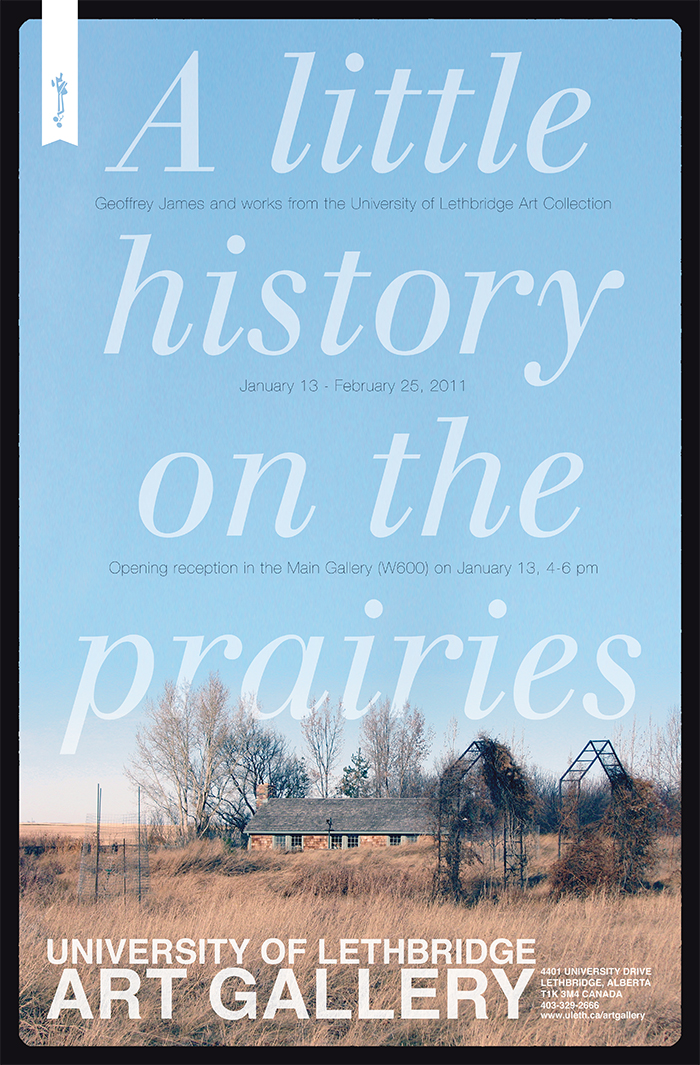

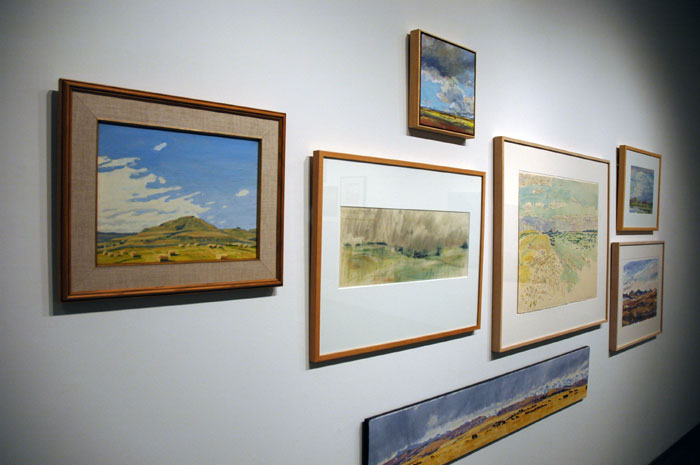

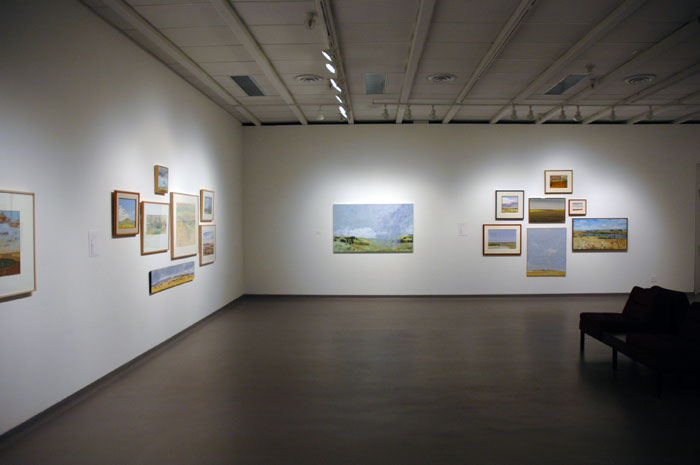
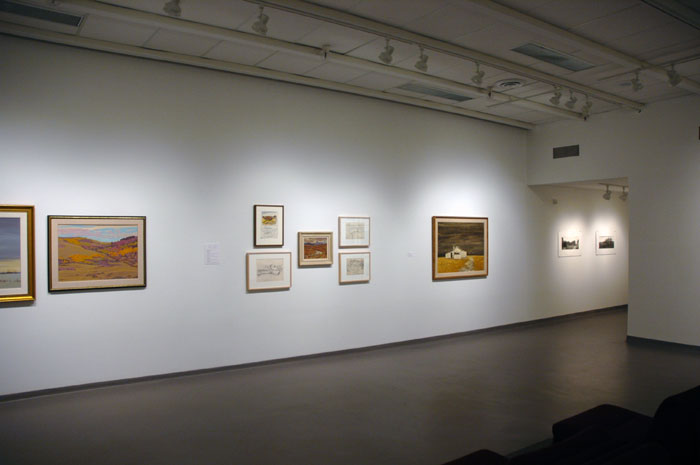
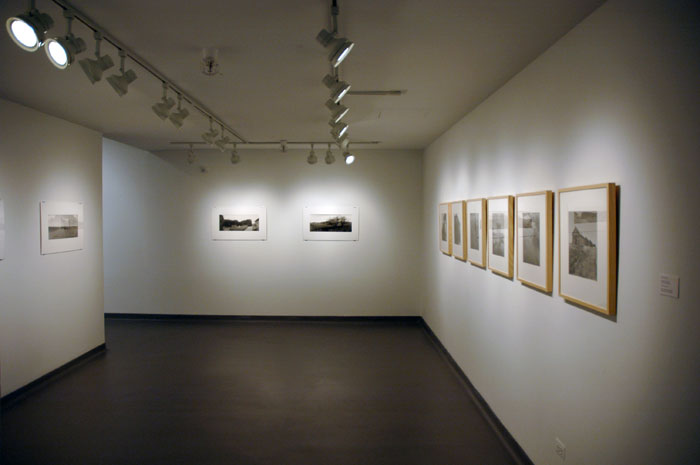
33 thoughts on “A Little History on the Prairies
January 13 – March 4, 2011
Main Gallery | Centre for the Arts | W600”